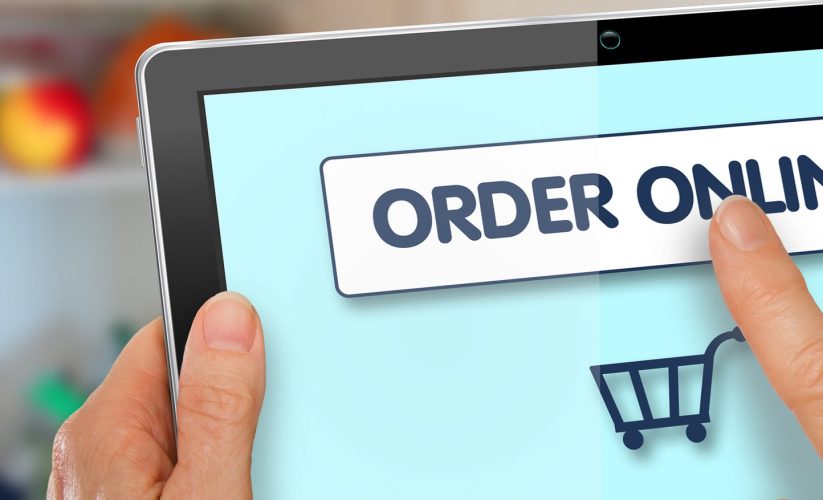
Future-Proofing Your Business with Online Ordering Tools
In a rapidly evolving digital landscape, small businesses must adapt to changing consumer behaviors and technological advancements. One effective way to ensure long-term success is by utilizing an online ordering platform for small business. These tools not only streamline operations but also enhance customer experiences and drive sales. This article explores how online ordering tools can future-proof your business and why they are essential in today’s market.
The Importance of Online Ordering Tools
As consumer preferences shift towards convenience and speed, online ordering tools have become vital for businesses across various sectors. From restaurants to retail, having a robust online ordering system enables businesses to cater to customer demands efficiently. Here are several reasons why investing in online ordering tools is essential:
- Meeting Customer Expectations
Today’s consumers expect seamless, convenient shopping experiences. An online ordering platform allows customers to browse products, customize orders, and complete transactions from the comfort of their homes. By providing this convenience, businesses can enhance customer satisfaction and foster loyalty. - Increased Revenue Opportunities
Implementing an online ordering system can open new revenue streams. With the ability to accept orders 24/7, businesses can capitalize on off-peak hours and reach customers who may not be able to visit in person. This flexibility can lead to increased sales and improved cash flow. - Operational Efficiency
Online ordering tools automate many aspects of the ordering process, reducing manual errors and streamlining operations. This efficiency allows staff to focus on other critical tasks, such as customer service and inventory management. - Data Collection and Insights
Online ordering platforms often come with built-in analytics tools that provide valuable insights into customer behavior, sales trends, and inventory management. This data enables businesses to make informed decisions, optimize their offerings, and tailor marketing strategies.
Key Features to Look for in an Online Ordering Platform
When selecting an online ordering platform for small business, consider the following features to ensure it meets your needs:
1. User-Friendly Interface
A straightforward and intuitive interface is crucial for both customers and staff. The platform should facilitate easy navigation, allowing customers to find products, customize orders, and complete transactions with minimal effort.
2. Mobile Compatibility
With a growing number of consumers using smartphones for shopping, it is essential that the platform is mobile-friendly. Ensure that the ordering interface is optimized for mobile devices, providing a seamless experience across all platforms.
3. Integration Capabilities
The ability to integrate with existing systems, such as Point of Sale (POS) systems, inventory management tools, and payment gateways, is vital. This integration can streamline operations and reduce discrepancies between online and in-store sales.
4. Customization Options
A platform that allows customization can help reinforce your brand identity. Look for options that let you tailor the ordering interface with your logo, color scheme, and product descriptions.
5. Payment Flexibility
Ensure the platform supports various payment options, including credit cards, digital wallets, and other popular payment methods. This flexibility can enhance the customer experience and improve conversion rates.
6. Order Management Tools
Effective order management features, such as tracking order status and processing refunds, can enhance operational efficiency. Look for platforms that provide real-time updates and notifications to keep customers informed.
Future-Proofing Strategies with Online Ordering Tools
To maximize the benefits of online ordering tools and future-proof your business, consider implementing the following strategies:
1. Stay Up-to-Date with Technology
Regularly assess your online ordering platform’s features and capabilities. Technology is constantly evolving, and staying up-to-date will ensure that you remain competitive. Look for platforms that offer regular updates and improvements.
2. Invest in Training
Ensure that your staff is well-trained in using the online ordering system. Effective training will enable them to manage orders efficiently, troubleshoot common issues, and enhance the overall customer experience.
3. Monitor Customer Feedback
Actively seek feedback from customers regarding their online ordering experience. Use surveys, reviews, and direct communication to gather insights that can help you improve the system and better meet customer needs.
4. Optimize Your Menu
Regularly update your online menu to reflect current offerings, seasonal items, and promotions. An optimized menu not only attracts repeat customers but also ensures that staff can respond accurately to customer inquiries.
5. Leverage Data Analytics
Utilize the analytics tools provided by your online ordering platform to monitor performance metrics. Analyze customer behavior, popular items, and sales trends to make informed decisions about inventory and marketing strategies.
6. Embrace Omnichannel Strategies
Consider integrating your online ordering platform with other sales channels, such as social media and mobile apps. An omnichannel approach can provide customers with multiple touchpoints to engage with your brand, enhancing their overall experience.
Conclusion
In a competitive market, investing in an online ordering platform for small business is essential for future-proofing your operations. By streamlining processes, enhancing customer satisfaction, and providing valuable data insights, these tools can significantly improve your business’s performance. As consumer expectations continue to evolve, embracing online ordering solutions will enable your business to adapt and thrive in the digital age. By implementing the strategies outlined in this article, you can ensure that your business is well-equipped to face the challenges of the future.





